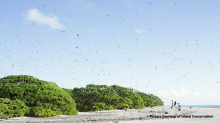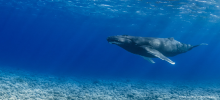
New Guinea is staggeringly rich in life. Occupying just 0.5% of Earth’s land surface, it hosts an estimated 5-8% of all species. This abundance is reflected in more than 2,800 orchid species, over 1,000 butterflies and around 800 birds. Over half of its known species are found nowhere else on Earth.
Its extraordinary biodiversity stems from a complex geological history and from being the world’s largest and highest tropical island. The collision of the Australian and Pacific plates created a rugged landscape of island arcs and mountain ranges. Abundant sunlight and rainfall, combined with its size and elevation — rising to almost 5,000 metres — have produced stacked habitats from coral reefs and mangroves to cloud forests and alpine grasslands. Isolation east of Wallace’s Line, intermittent land bridges with Australia during glacial cycles, and a light human footprint over 50,000 years have made New Guinea an evolutionary laboratory.









